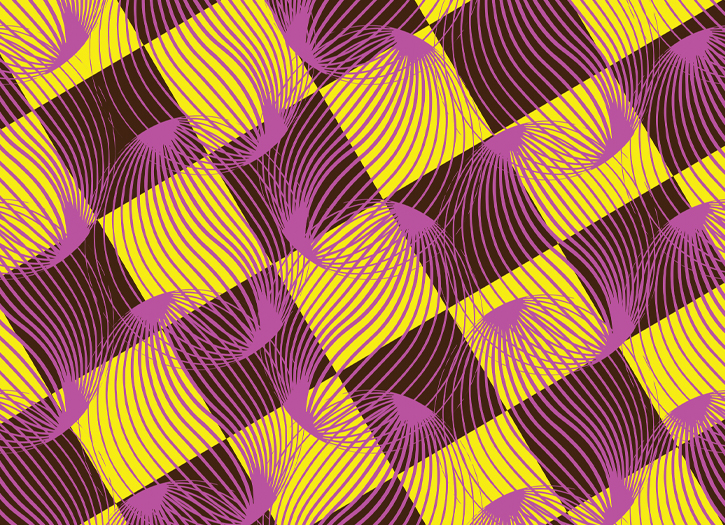African wax prints, also known as Ankara and Dutch wax prints, are omnipresent and common materials for clothing in Africa, especially West Africa.
They are industrially produced colorful cotton cloths with batik-inspired printing.One feature of these materials is the lack of difference in the color intensity of the front and back sides. The wax fabric can be sorted into categories of quality.Normally, the fabrics are sold in lengths of 12 yards (11 m) as “full piece” or 6 yards (5.5 m) as “half piece.”
In Sub-Saharan Africa these textiles have an annual sales volume of 2.1 billion yards, with an average production cost of $2.6 billion and retail value of $4 billion. Ghana has an annual consumption of textiles of about 130 million yards (120 million metres). The three largest local manufacturers (ATL, GTP, and Printex) produce 30 million yards. 100 million yards come from inexpensive smuggled Asian imports.The Vlisco Group, owner of the Vlisco, Uniwax, Woodin, and GTP brands, produced 58.8 million yards (53.8 million meters) of fabric in 2011. Net sales were €225 million, or $291.65 million. In 2014, Vlisco’s 70 million yards of fabric (about 64 million meters) were produced in the Netherlands, yielding a turnover of €300 million.
During the Dutch colonization of Indonesia, Dutch merchants and administrators became familiar with the batik technique. Thanks to this contact, the owners of textile factories in the Netherlands, such as Jean Baptiste Theodore Prévinaire and Pieter Fentener van Vlissingen, received examples of batik textiles by the 1850s if not before, and started developing machine printing processes which could imitate batik. They hoped that these much cheaper machine-made imitations could outcompete the original batiks in the Indonesian market, effecting the look of batik without all the labor-intensive work required to make the real thing.
The Dutch wax prints quickly integrated themselves into African apparel, sometimes under names such as “Veritable Dutch Hollandais,” and “Wax Hollandais.” Women used the fabrics as a method of communication and expression, with certain patterns being used as a shared language, with widely understood meanings. Many patterns began receiving catchy names. Over time, the prints became more African-inspired, and African-owned by the mid-twentieth century. They also began to be used as formal wear by leaders, diplomats, and the wealthy population.
Prévinaire’s method for the production of imitation batik cloth proceeds as follows. A block-printing machine applies resin to both sides of the fabric. It is then submerged into the dye, in order to allow the dye to repel the resin covered parts of the fabric. This process is repeated, to build up a coloured design on the fabric. Multiple wooden stamp blocks would be needed for each colour within the design. Today, Africa is home to the production of high quality wax prints. Manufacturers across Africa include ABC Wax, Woodin, Uniwax, Akosombo Textiles Limited (ATL), and GTP (Ghana Textiles Printing Company).These companies have helped reduce the prices of African wax prints in the continent when compared to European imports.







nice to the history